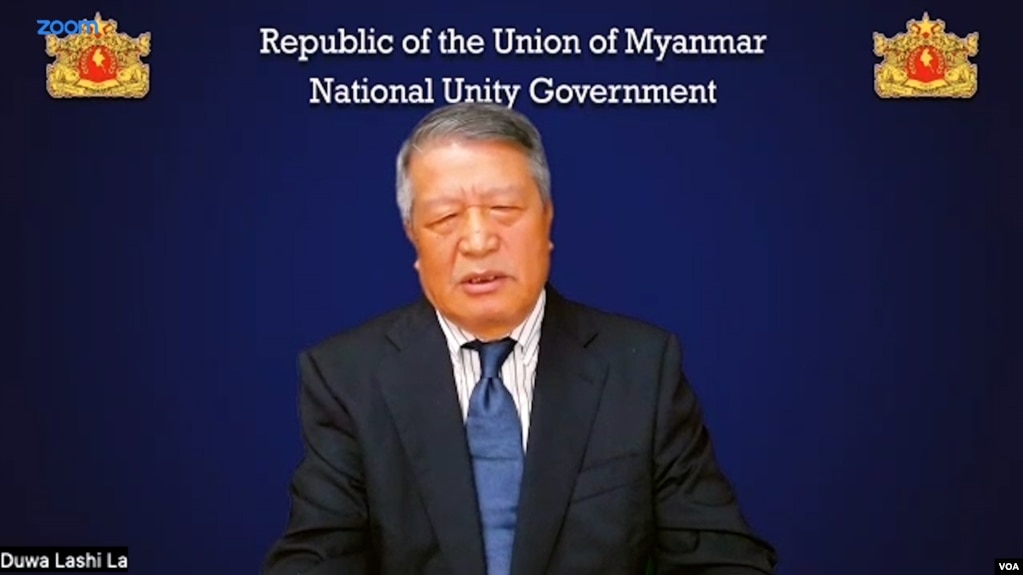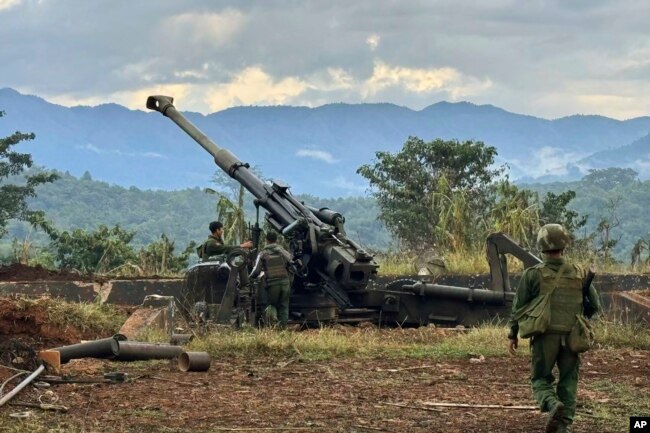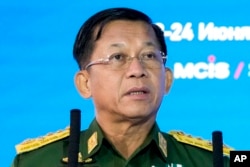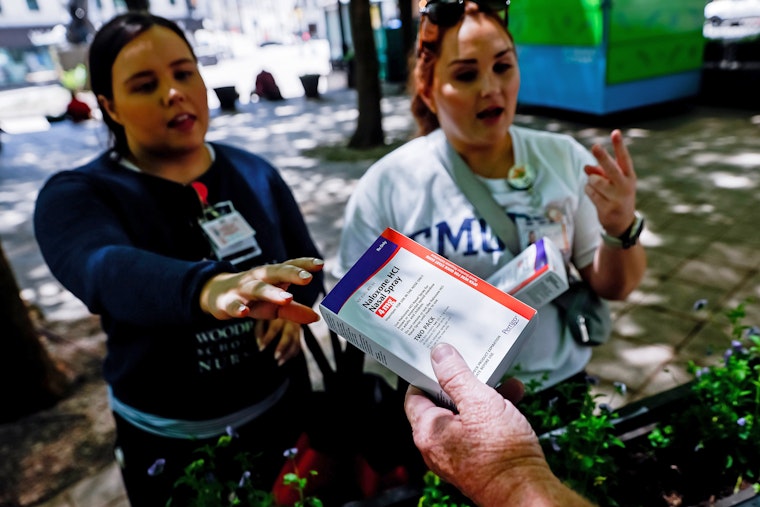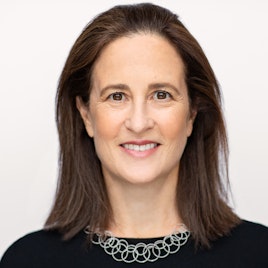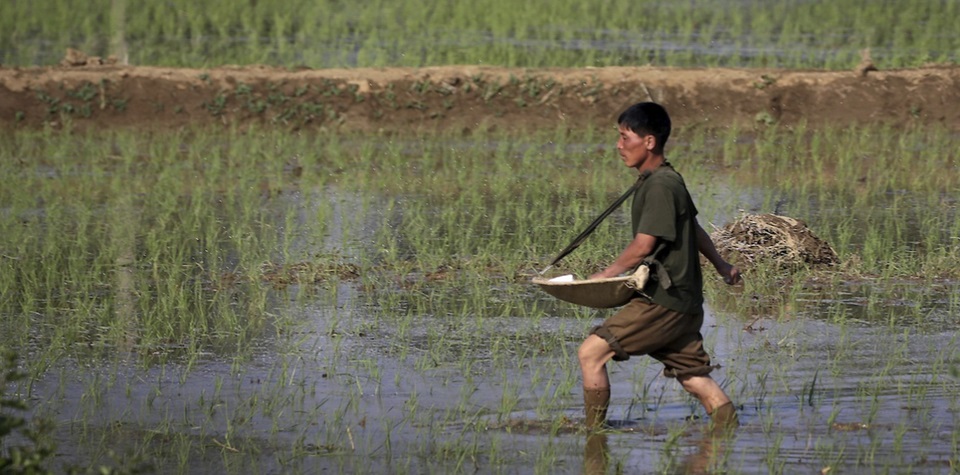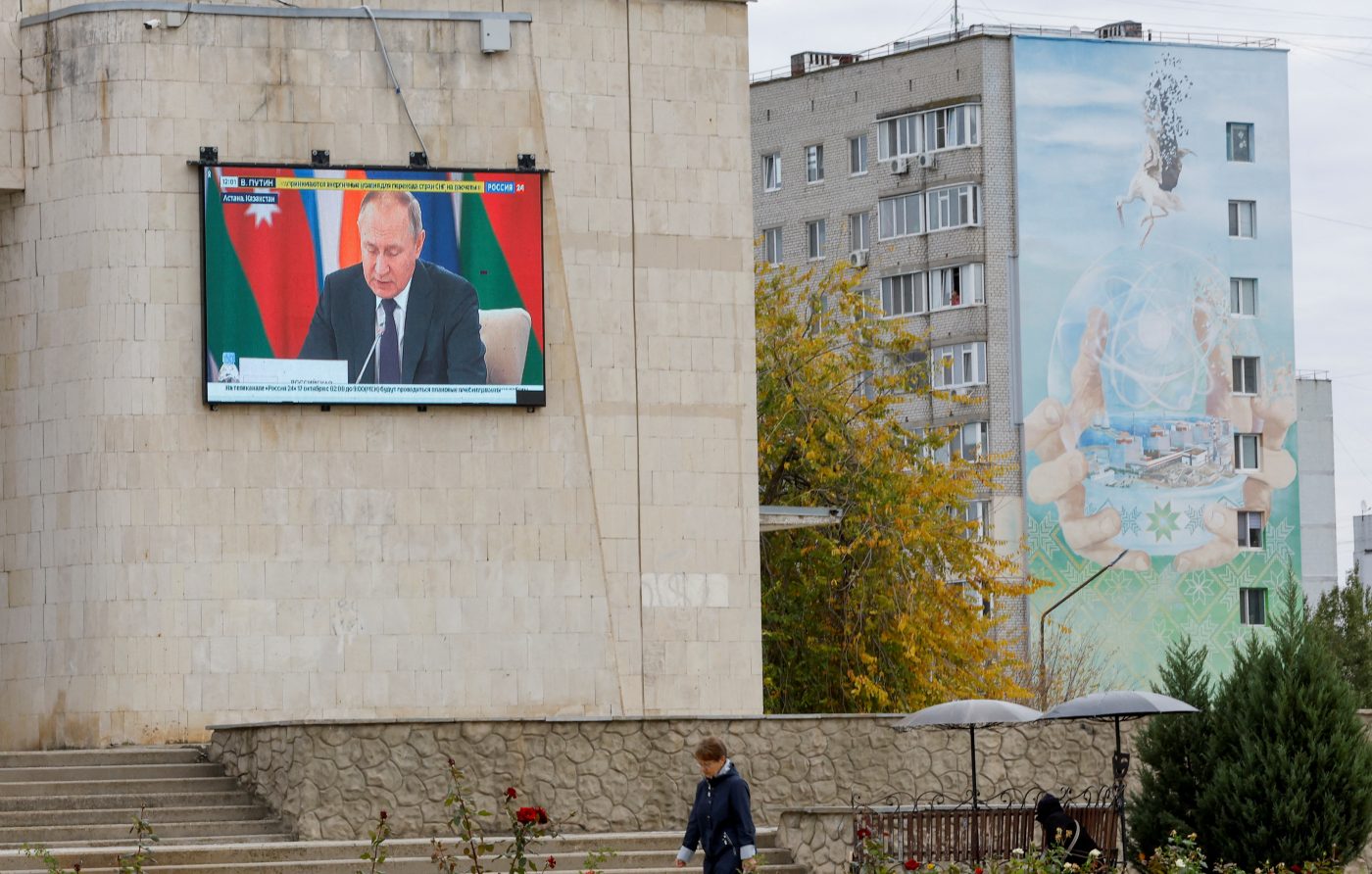By Jess Thomson
Science Reporter
A heavy metal that can cause cancer may be spread far and wide via the smoke of wildfires, new research has found.
The carcinogenic form of the metal chromium and other cancer-associated chemicals were found to be present in large quantities in ash after wildfires across Northern California, a new paper in the journal Nature Communications reveals.
In dry environments, this ash may easily be blown towards population centers in the wind, and could therefore pose a long-term public health hazard.
The researchers analyzed the soil after wildfires across Northern California in 2019 and 2020, including in Sonoma, Napa and Lake Counties, finding that there were dangerous levels of chromium in the ash. The chromium was discovered to be most prevalent in areas with an underlying metal-rich geology, and in areas where the fires were more severe.
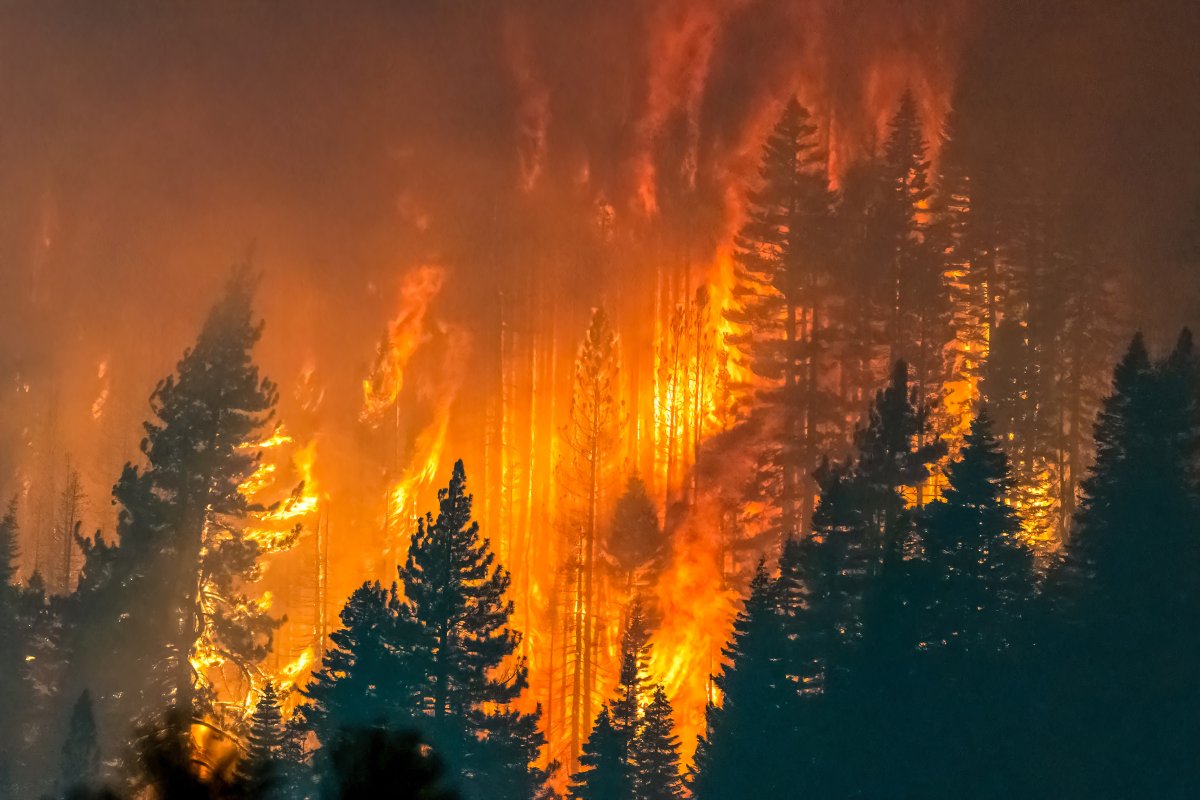 A stock image of a wildfire near South Lake Tahoe in California. Wildfires have been found to leave behind ash rich in the carcinogenic form of the metal chromium.ISTOCK / GETTY IMAGES PLUS
A stock image of a wildfire near South Lake Tahoe in California. Wildfires have been found to leave behind ash rich in the carcinogenic form of the metal chromium.ISTOCK / GETTY IMAGES PLUS"We demonstrate that high temperatures during California wildfires catalyzed widespread transformation of chromium to its carcinogenic form in soil and ash, as hexavalent chromium, particularly in areas with metal-rich geologies (e.g., serpentinite)," the authors, hailing from Stanford University, wrote in the paper.
 NEWSLETTERThe Bulletin
NEWSLETTERThe BulletinYour daily briefing of everything you need to know
"In wildfire ash, we observed dangerous levels (327-13,100 µg kg−1 [micrograms per kilograms]) of reactive hexavalent chromium in wind-dispersible particulates," they said.
Chromium is an essential element in the human body, but only in the form of trivalent chromium (Cr III). Hexavalent chromium (Cr VI), however, is carcinogenic, and is the form of chromium that has been found in the wildfire ash. According to the United States Environmental Protection Agency, Cr VI exposure is strongly linked to lung cancers in humans and animals, as well as acute effects including coughing and wheezing, and even gastrointestinal and neurological effects in high dosages.
The researchers also found that drier weather in the aftermath of the fires caused the chromium to stay in the soil and dust for nearly a year.
"Relatively dry post-fire weather contributed to the persistence of elevated hexavalent chromium in surficial soil layers for up to ten months post-fire," the authors wrote.
Sign up for Newsweek’s daily headlines
Wildfires release large quantities of other dangerous substances, including PM2.5 pollution. PM2.5 particles are 2.5 micrometers or less in diameter, and include soot, black carbon, ammonia, sodium chloride and mineral dust, which can all cause respiratory irritation.

The researchers suggest that the chromium left behind in the ash may also pose a large health hazard to people living nearby and first responders, as it will get blown around in the wind. While the study focused on California wildfires, the authors estimate that other regions of the world where soils are rich in heavy metals and fires are frequent face similar problems, including large swaths of West, East and Southeast Africa, Northern Australia and Russia.
As the chromium appears to persist in the soil for longer in drier environments, the effects of climate change may therefore play into both the frequency and severity of wildfires, as well as exacerbating the damaging effects of wildfire pollution in the future.
"Our findings provide new insights into why wildfire smoke exposure appears to be more hazardous to humans than pollution from other sources," the authors wrote.
Jess Thomson is a Newsweek Science Reporter based in London UK. Her focus is reporting on science, technology and healthcare. She has covered weird animal behavior, space news and the impacts of climate change extensively. Jess joined Newsweek in May 2022 and previously worked at Springer Nature. She is a graduate of the University of Oxford. Languages: English.

Forest burns in the Carr Fire on July 30, 2018 west of Redding, California. (Getty Images)
Wildfires in parts of the U.S. West may be transforming a benign form of chromium into its cancer-causing counterpart — potentially endangering first responders and surrounding communities, a new study has found.
The research, published Tuesday in the journal Nature Communications, identified high levels of the hazardous metal hexavalent chromium, or chromium-6, at specific types of burn sites along California’s North Coast.
Also known as “the Erin Brockovich chemical,” chromium-6 emerged in the public eye in the 1990s after Brockovich — then a legal aid — found that it was contaminating drinking water and sickening residents of Hinkley, Calif.
This toxic compound, which raises cancer risk when inhaled or ingested, was not present at the sites of interest for the study before they burned.
Rather, soils and plants at these locations were rich in naturally-occurring trivalent chromium — chromium-3 — an essential nutrient that helps the human body break down glucose.
While chromium-6 can also exist naturally in the environment, this toxic form of the metal more often contaminates communities via runoff and wastewater from industrial processes.
Wildfire smoke plumes are known to transport dangerous pollutants such as aerosols, gases and fine particulate matter, but the researchers wondered whether the same could be said for heavy metals, and what the risk might be to firefighters and those who reside downwind.
“In the complex mixture of gasses and particles that wildfires spew out as smoke and leave behind as dust, heavy metals such as chromium have largely been overlooked,” senior author Scott Fendorf, a professor at Stanford University’s Doerr School of Sustainability, said in a statement.
Laboratory experiments conducted by Australian researchers in 2019 had already shown that chromium-6 could form rapidly from chromium-3 in surface soils set ablaze.
This transformation occurs through a process known as oxidation — or in this scenario, a reaction between chromium and atmospheric oxygen in which electrons are lost.
Because that process is slow at low temperatures, it “effectively doesn’t happen,” Fendorf, who is also a senior fellow at the Stanford Woods Institute for the Environment, told The Hill.
“But when you start heating the samples up through in this case wildfires, that causes that reaction to occur,” he said. “And so, you’ve transformed from the benign to the really toxic form.”
With that in mind, Fendorf and his colleagues decided to test the theory that wildfires could leave soils contaminated with chromium-6 in their stead.
The scientists focused their attention on California’s North Coast, where they identified four recently burned ecological preserves that contain chromium-rich rocks, such as serpentinite.
While the southern Sierra Nevada tends to have more granite and less chromium content, the northern Sierra has more serpentinite — California’s state rock, Fendorf noted.
“When you bring the wildfire through, that then leads to much higher levels of chromium-6 being produced,” he said.
The four research sites — Pepperwood Preserve, White Rock Preserve, Modini Preserve and Sylvia McLaughlin Natural Reserve — were all partly or completely burned during the Kincade or Hennessey fires, which respectively occurred in Nov. 2019 and Sept. 2020, per the study.
Lead author Alandra Lopez, a postdoctoral scholar in Earth system science at Stanford’s Doerr School, collected soil from these sites and then separated out the smallest particles that are most sensitive to wind transport.
She then measured the levels of chromium-6 in this ultra-fine dust from both burned and unburned areas, while also gathering data on local fire severity, prevailing soil conditions, underlying geology and ecosystem traits.
In chromium-rich sites where vegetation fueled long-lasting fires at high heat, the scientists found that toxic chromium concentrations were 6.5 times higher than those in unburned areas.
“Our study suggests far more attention should be paid to wildfire-modified chromium, and we presume additional metals as well,” Lopez said in a statement.
Doing so, she added, is necessary “to more thoroughly characterize the overall threats wildfires pose to human health.”
As far as these potential threats are concerned, the authors said they believe that fire-induced toxic chromium exposure has the most acute impacts on first responders and people who live near the blazes.
In comparison to exposure to chromium-6 via contaminated drinking water, as discovered in Hinkley by Brockovich, Fendorf stressed that “inhalation is far worse.”
“Toxicologists are really clear on that,” he said. “If you had the choice, you want to drink it before you breathe it. And not that they suggest either one.”
The extent of the threat also varies based on which plants are fueling the fire, according to Fendorf.
Grasslands, for example, don’t produce sufficiently high temperatures to create a lot of chromium-6, but shrubs and tree canopies do provide ample heat, he explained.
Even after the fires end, strong winds could expose nearby populations to fine particles of chromium-laced soil, the researchers noted.
The brunt of the risk associated with inhaling airborne chromium-6 likely declines following the first big rainfall, which can wash the metal underground, according to Fendorf.
But in an arid environment like that of the U.S. West, which is facing increasing and prolonged droughts due to climate change, exposure risks could persist for those rebuilding and revegetating burned areas, he warned.
While chromium has been Fendorf’s biggest toxin of interest due to “the radical transformation that takes place,” he said he is also concerned about other metals, such as manganese, certain forms of iron, nickel and cadmium.
Stressing the need for further research into wildfire-related exposure to heavy metals, Fendorf noted that the time being, wearing an N95 at such a burn site could be beneficial.
Fendorf said that he and his team are now creating predictive maps, so that firefighters have more awareness as to where they might encounter fine particulate matter and where they might also face chromium-6 exposure risk.
He and his colleagues have been preparing for the past two years to deploy active monitoring devices that are capable of monitoring contaminants amid a blaze, but such conflagrations have been minimal during this period.
Ed Burton, who led the 2019 research on the transformation of chromium-3 to chromium-6, credited the new study for showing “that wildfires cause a dramatic shift in chemistry of chromium in fire-impacted soil.”
“Significantly, the authors show that newly-formed hexavalent chromium can persist in surface soil and ash for many months after wildfires,” Burton, a professor of environmental geochemistry and mineralogy at Australia’s Southern Cross University, told The Hill in an email.
In addition to describing the potential health risks to those exposed to soil particles or ash, he stressed his “particular concern” as to the impacts of these findings on the U.S. West.
The region could be at particular risk because “large areas of land are naturally rich in soil chromium and because wildfires appear to be increasing in severity and frequency due to climate change,” said Burton, who was not involved with the Stanford study.
Dimitrios Alexakis, a professor of geology and geochemistry at Greece’s University of West Attica, likewise described “a broad global threat of dust-born metal and wildfire smoke to humans,” stemming from the mix of these blazes and chromium-rich soils.
“This study demonstrates an underrecognized health threat to humans associated with the geology and fire severity,” he told The Hill in an email.
Alexakis, who was also not involved in this research, has studied both the dispersion of toxins from burned vegetation and the impacts of fire-fueled land contamination on human health.
The Stanford study, he observed, could help offer “fresh perspectives on the reasons behind the heightened health risks associated with exposure to wildfire smoke compared to pollution from other sources.”
Understanding how environmental factors contribute to the creation of chromium-6 through fire could also help scientists devise predictive tools to mitigate exposure risk and guide policymaking, according to Alexakis.
As further research on the subject unfolds, the Stanford team stressed that the results will be applicable not just to California’s North Coast, but to fire-prone areas with metal-rich landscapes around the world.
“With wildland fires expected to increase in frequency and severity in many geographic regions due to a combination of climate change and past fire management, post-fire dust emissions are likely to rise,” the authors stated.
Both the Pacific Rim and Mediterranean areas have geologies that are higher in chromium, as do other parts of Europe, Australia, South Africa and Brazil, according to the study.
“Every continent has areas that are quite high at risk, so it’s not a small point,” Fendorf said. “It’s really a broadly distributed problem.”
